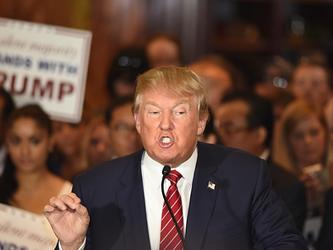IIeX Europe day one: diversity, dishonesty and Donald Trump
What started as a grey, drizzly day in Amsterdam brightened up as the day wore on, but the most heat generated during the conference was as a result of one name: Donald Trump.
The Republican nomination candidate was a recurring theme throughout the day, mostly as an illustration of evoking strong emotional responses (and prompting discussion on how best to measure them). Among other mentions, BrainJuicer’s John Kearon claimed that his company’s ‘fame, feeling and fluency’ model of successful marketing – where any kind of feeling (positive or negative) is a better driver of impact than neutrality – could explain Mr Trump’s success; while Lana Novikova of Heartbeat MR – a finalist in the Insight Innovation Competition, which analyses the emotional content of open-ended responses – described the top emotions associated with the controversial figure as anger, joy and fear.
Another (mildly) controversial topic discussed was that of dishonesty, specifically among survey respondents. According to Alexander Wheatley of Lightspeed GMI, there are three main areas of dishonesty: things we're scared to be honest about (e.g. private health issues); things we lie to ourselves about (e.g. drinking habits); and things we want to lie about (e.g. ownership of devices). The key to tackling each of these, says Wheatley, is: to use a survey introduction that relates to making a promise of honesty (imagery helps with this); break down tasks to facilitate honesty around complex issues (e.g. ask people for their alcohol intake in the last week, rather than on average, and provide examples of units); and ask questions ‘directly, but also less directly’ in order to ‘catch people out’ (for example asking people what device they would like to purchase next, then asking them if that is to replace an existing device or not). Most people left the session wondering whether we could trust each other (or ourselves).
An afternoon panel discussion on diversity (which appropriately, had a ratio of four women (including moderator Kristin Luck) to one man (Kantar’s Eric Salama)) looked at the various issues leading to and resulting from a lack of diversity in market research. While it was agreed up front that the issue goes much deeper than just gender, a good portion of the discussion focused on that particular topic. Suggestions for tackling the imbalance centred around the idea of mentoring – having strong role models for female researchers to look up to, emulate, and be guided by, based on the idea that ‘you can't be what you can't see'; though some audience members questioned why women should need to think about being role models when men are permitted to be individuals. Panellists also urged the industry to be colour- and religion-brave.
Other things I learned today:
- According to Space Doctors, car manufacturers employ composers to create the specific sound made when their vehicles’ doors close
- Most millennials prefer Bernie Sanders to Hillary Clinton because he’s the underdog (which means he has the potential to conquer and change, and therefore be a hero) and because his crowdfunded campaign demonstrates his capacity for innovation (Martijn Lampert). Clinton represents authority and recognition
- Sometimes being told your company isn't innovative can be the most innovative thing that can happen to it (just ask Jeff Reynolds of LRW)

We hope you enjoyed this article.
Research Live is published by MRS.
The Market Research Society (MRS) exists to promote and protect the research sector, showcasing how research delivers impact for businesses and government.
Members of MRS enjoy many benefits including tailoured policy guidance, discounts on training and conferences, and access to member-only content.
For example, there's an archive of winning case studies from over a decade of MRS Awards.
Find out more about the benefits of joining MRS here.













3 Comments
Jim Schwab
10 years ago
Why is it "appropriate" to have a 4-1 women to men ratio in a discussion about diversity in MR. Not trying to be a smart___ just interested in your response.
Like Reply Report
Bronwen Morgan
10 years ago
Hi Jim. It seemed fitting that the panel had a female skew as much of the discussion focused on gender diversity, and the majority of the panels at the conference - and, to be fair, most conferences - were male heavy. Eric Salama commented that he was delighted to be 'in the minority' - it made for an interesting dynamic.
Like Reply Report
William Barlow
10 years ago
Asking people what device they would like to purchase next, then asking them if that is to replace an existing device or not, does not identify dishonest respondents. For example, I own a tablet and the next device I want to buy is a tablet. However, the new tablet will not replace the existing tablet but supplement it; one tablet will stay at home while the other tablet will stay at work, saving me the hassle of carrying a tablet to and from work. (If I want to surf on the move, I have a phone).
Like Reply Report